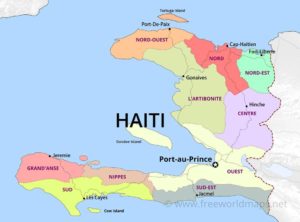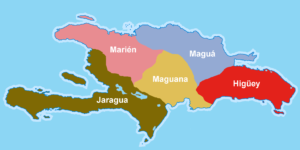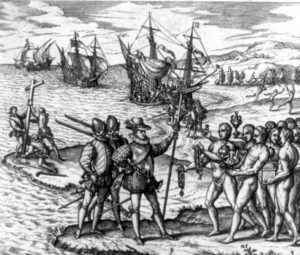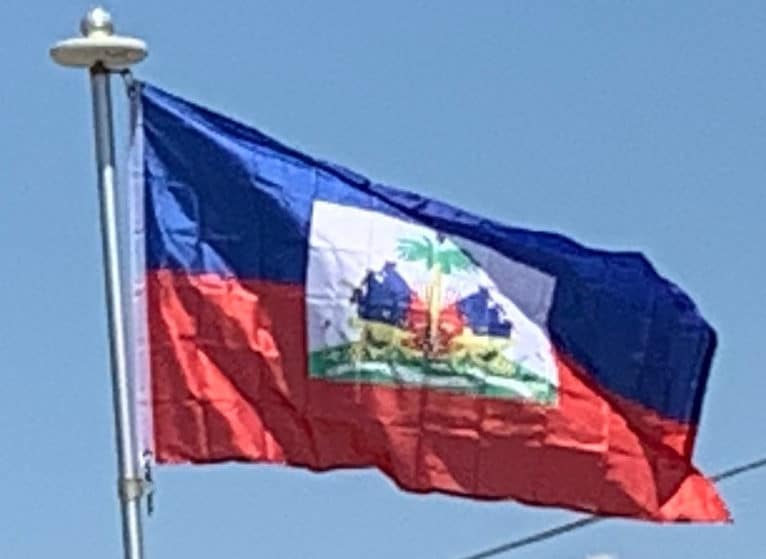
Haiti is a founding member of the United Nations, Organization of American States (OAS), Association of Caribbean States, and the International Francophonie Organisation. In addition to CARICOM, it is a member of the International Monetary Fund, World Trade Organization, and the Community of Latin American and Caribbean States. Historically poor and politically unstable, Haiti has the lowest Human Development Index in the Americas. Since the turn of the 21st century, the country has endured a coup d’état, which prompted a U.N. intervention, as well as a deadly earthquake that killed over 250,000.
History:
Pre-Columbian History:
The island of Hispaniola, of which Haiti occupies the western three-eighths, has been inhabited since about 5000 BC by groups of Native Americans thought to have arrived from Central or South America. Genetic studies show that some of these groups were related to the Yanomami of the Amazon Basin. Among these early settlers were the Ciboney peoples, followed by the Taíno, speakers of an Arawakan language, elements of which have been preserved in Haitian Creole. The Taíno name for the entire island was Haiti, or alternatively Quisqeya.

In Taíno society the largest unit of political organisation was led by a cacique, or chief, as the Europeans understood them. The island of Hipaniola was divided among five ‘caciquedoms’: the Magua in the north east, the Marien in the north west, the Jaragua in the south west, the Maguana in the central regions of Cibao, and the Higüey in the south east.
Taíno cultural artifacts include cave paintings in several locations in the country. These have become national symbols of Haiti and tourist attractions. Modern-day Léogâne, started as a French colonial town in the southwest, is beside the former capital of the caciquedom of Xaragua.
Colonial Era:
Spanish Rule (1492–1625):
Navigator Christopher Columbus landed in Haiti on 6 December 1492, in an area that he named Môle-Saint-Nicolas, and claimed the island for the Crown of Castile. Nineteen days later, his ship the Santa María ran aground near the present site of Cap-Haïtien. Columbus left 39 men on the island, who founded the settlement of La Navidad on 25 December 1492. Relations with the native peoples, initially good, broke down and the settlers were later killed by the Taíno.

The sailors carried endemic Eurasian infectious diseases to which the native peoples lacked immunity, causing them to die in great numbers in epidemics. The first recorded smallpox epidemic in the Americas erupted on Hispaniola in 1507. Their numbers were further reduced by the harshness of the encomienda system, in which the Spanish forced natives to work in gold mines and plantations.
The Spanish passed the Laws of Burgos, 1512–13, which forbade the maltreatment of natives, endorsed their conversion to Catholicism, and gave legal framework to encomiendas. The natives were brought to these sites to work in specific plantations or industries.
